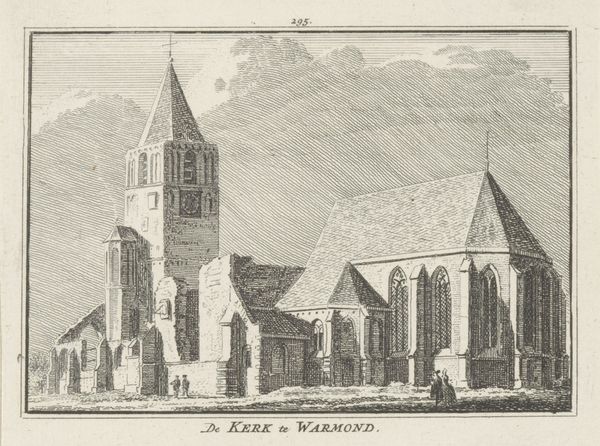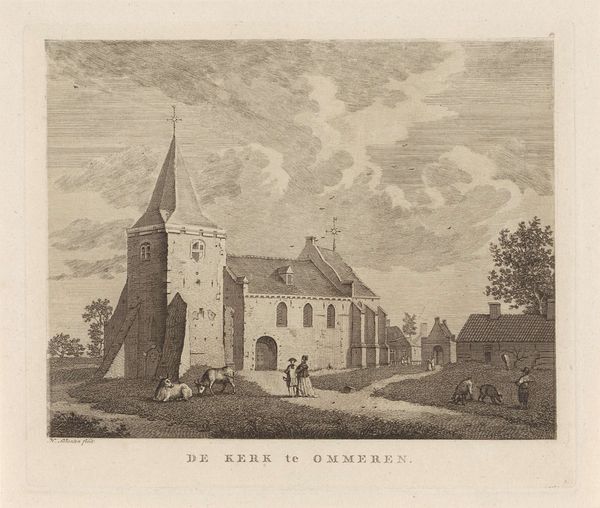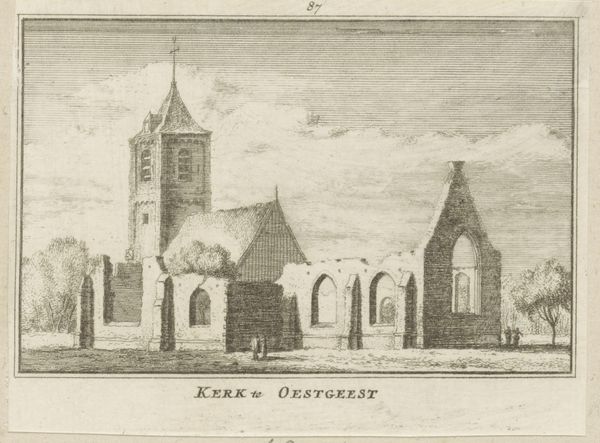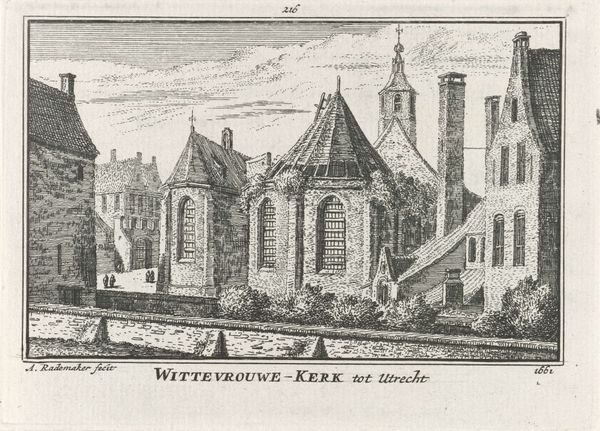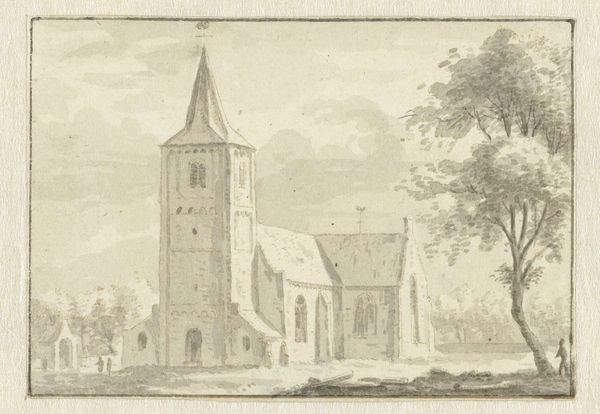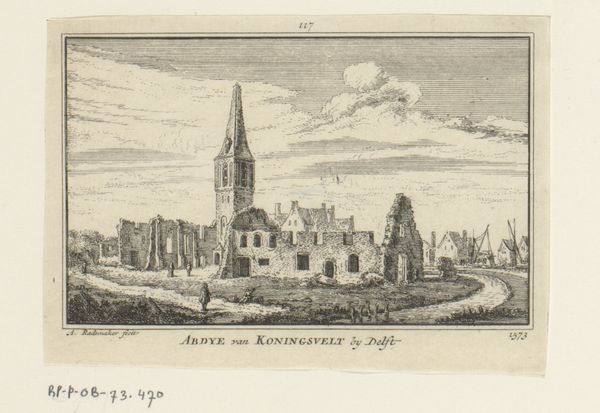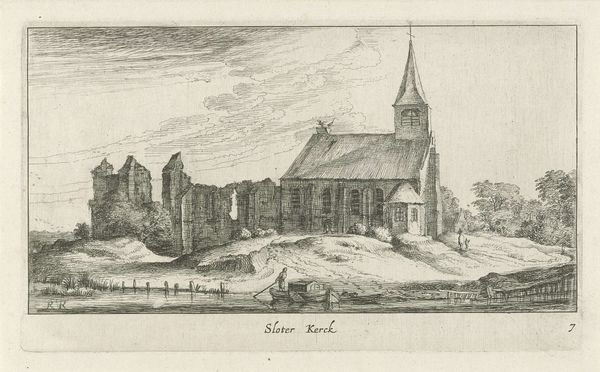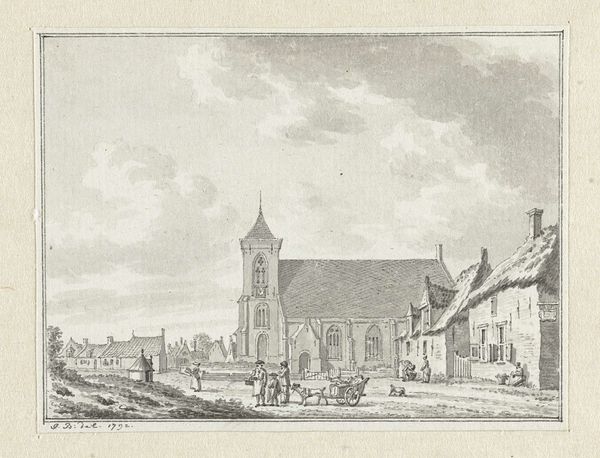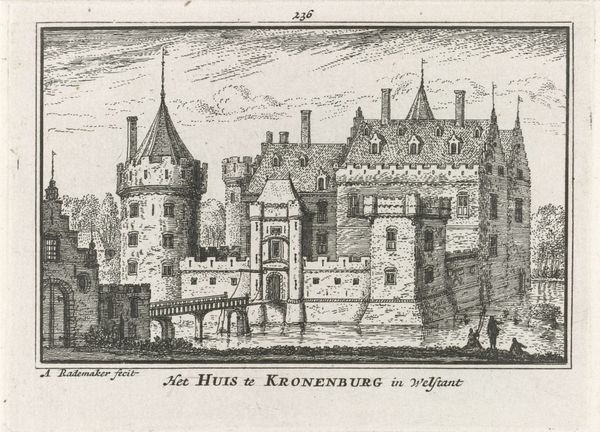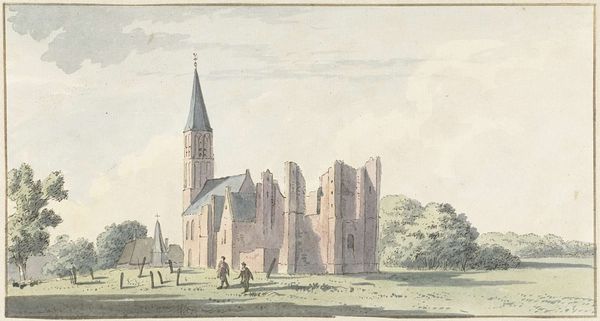
#
aged paper
#
parchment
#
old engraving style
#
sketch book
#
personal sketchbook
#
historical photography
#
old-timey
#
19th century
#
storyboard and sketchbook work
#
columned text
Dimensions: height 80 mm, width 115 mm
Copyright: Rijks Museum: Open Domain
Curator: Good morning! We're standing before "Gezicht op de kerk te Warmond, 1600" an engraving by Abraham Rademaker dating from 1727 to 1733. It resides right here in the Rijksmuseum. Editor: What strikes me immediately is this atmosphere of serene decay. The church, rendered in delicate lines, seems to be simultaneously crumbling and enduring. It’s almost like a peaceful ghost. Curator: Rademaker was indeed fascinated with depicting historical sites and buildings, often emphasizing their state of ruin. It reflected a broader cultural interest in the past that was emerging in the Dutch Republic at the time, connecting places to the weight of history and time. Editor: You know, looking at the way the lines are so meticulously etched, it gives me a sense of a cartographer plotting not just physical space but also the passage of years. Curator: Precisely. The engraving medium lends itself to such detail, enabling Rademaker to portray not only architectural specifics but also the textures of aging stone. He also used this series to gain entry into certain social circles as well. There are examples of him including the residences of the upper crust into some images and flattering them. Editor: Do you think Rademaker felt some responsibility portraying these churches and spaces at risk, giving them new relevance for viewers? Curator: Absolutely. It speaks to a deep concern for cultural heritage and the fleeting nature of earthly grandeur. These images often acted as souvenirs or records for historical documentation that could become meaningful symbols within the local and national cultures. The perspective used invites the viewer to contemplate the impact of history on both our landmarks and us as onlookers. Editor: A touching memento mori, a stark and beautiful reminder that all things, even faith and stone, eventually surrender to time’s relentless march. Thanks for highlighting the way these prints really brought architectural landmarks into the cultural consciousness! Curator: Thank you, its significance runs deeper when seen as more than documentation.
Comments
No comments
Be the first to comment and join the conversation on the ultimate creative platform.


